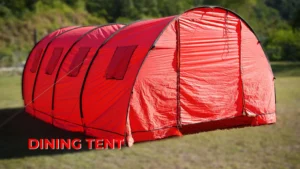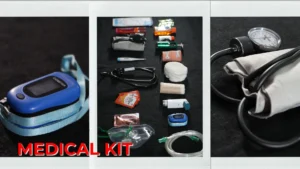Location
Uttarakhand | India
Average Trekking
20 km
Duration
7 Days
Difficulty
Difficult
Altitude
12,500 Ft
The Queen Of All Winter Trek
Uttarakhand | India
20 km
7 Days
Difficult
12,500 Ft
01
02
03
04
06
01 Fri
29 Fri
01
02
03
04
05
01 Sun
29 Sun
01
02
03
04
05
01 Wed
29 Wed
01
02
03
04
01 Sat
01
02
03
04
05
01 Sat
29 Sat
Trek Name: Kedarkantha Trek
Days: 6
Adventure Type: Trekking
Base Camp: Sankri
Season: Spring | Winter |
Month: January | February | March | April | November | December |
Distance: 20 Km.
Trail Type: Circle trail | Camping in various locations, starting and ending at the same point.
Country: India
Altitude: 12,500 Ft.
Grade: Easy to Moderate
Stay: Hotel and teahouse
Food: Meals while on trek & at Hotel/Guesthouse (Veg & Eggs)
Stunning Summit Views: The summit, standing at 12,500 feet (3,810 meters), offers a 360-degree panoramic view of famous Himalayan peaks such as Swargarohini, Bandarpoonch, Black Peak (Kalanag), and the Gangotri and Yamunotri ranges.
Beautiful Camping Spots: The trek features some of the most picturesque campsites in the Himalayas, such as Juda Ka Talab and Kedarkantha Base, surrounded by dense pine forests and open clearings.
Winter Wonderland: The trek is particularly famous for its snow-covered trails in the winter months, providing a magical winter trekking experience.
Rich Flora and Fauna: The trail passes through dense forests of pine, oak, and rhododendron, home to a variety of wildlife and bird species.
Cultural Experience: The trek begins from the charming village of Sankri, where you can experience the local culture, traditional wooden houses, and warm hospitality of the Garhwali people.
Ideal for Beginners: The Kedarkantha Trek is considered a relatively easy trek, making it ideal for beginners. The well-defined trails and gradual ascent ensure a comfortable trekking experience.
Physical Fitness: The Kedarkantha Trek is moderately challenging, so a basic level of fitness is required. Regular cardio exercises, leg strength training, and endurance-building activities will help you prepare.
Acclimatization: Although the trek doesn’t reach extreme altitudes, it’s still important to acclimatize properly. Spend a day in Sankri before starting the trek to get used to the altitude.
Altitude Awareness: Be aware of symptoms of altitude sickness, such as headaches, dizziness, or nausea. If symptoms persist, descend immediately and consult your guide.
Weather Preparedness: The weather can be unpredictable, especially in winter. Be prepared for sudden changes, including snowfall, and carry appropriate gear.
Hydration and Nutrition: Stay hydrated by drinking plenty of water, and keep your energy levels up with nutritious snacks. Avoid consuming alcohol or smoking during the trek.
Start Early: Begin your trek early in the day to ensure you have enough daylight to reach your campsite. Early starts also provide clearer views from the summit.
Respect Local Culture and Environment: Respect the local culture and traditions of the villages you pass through. Practice “Leave No Trace” principles—do not litter, respect wildlife, and avoid disturbing the natural environment.
Follow the Guide’s Instructions: The terrain can be challenging, especially in snowy conditions. Always listen to your guide’s instructions and stay with the group.
Proper Footwear: Ensure your trekking shoes are suitable for snowy conditions, and consider using microspikes or crampons for added grip on icy trails.
Photography Tips: The snowy landscape is stunning, but keep your electronics warm and carry extra batteries as cold weather can drain battery life quickly.
First, you can arrive at Delhi, Dehradun Airport or Chandigarh. The journey from these locations to Dehradun is explained below.
1. Take an overnight train from Delhi to Dehradun.
2. Take a bus to Dehradun ISBT from Delhi Kashmiri gate ISBT or Chandigarh Sector 17 Bus stand, and then take local transport to the pickup point (Prince Chowk).
Delhi to Dehradun – 250km | 6hr.
Chandigarh to Dehradun – 220km | 5hr
The distance from the Dehradun Bus Stand (ISBT) to the Railway Station is 6 km, without traffic, it will take 15 minutes.
( We always recommend to go for the govt. Buses over the private ones outside the bus station as based on the experience we have found that there are very high chances of delay involved with private buses. Also, govt. Buses are always more reliable. Whichever bus you choose, just make sure to reach Dehradun at least by 05:30 am positively. )
3. Take a flight to Dehradun airport (Jolly Grant Airport), then from the Airport to Prince Chowk, Dehradun Distance is 30km and it will take around 1 hr( if coming by flight then reach one day early).
( If you prefer to travel independently to Base camp and don’t want to take TMV’s pick-up service, you can either take a government bus or book a private cab from Rishikesh. Your trek coordinator will provide guidance on how to arrange for the bus or cab booking. )
TMV offers comfortable transportation through Tempo Traveler, Bolero, or equivalent vehicles. If you wish to upgrade your mode of transportation, please contact your trek coordinator for further assistance.
| Backpack with rain cover | (50 – 60 ltr) with comfortable shoulder straps |
| Day pack with rain cover | 20 – 30 ltr (If off-load opted) |
| Walking stick | Advisable (At least one) |
| Water Bottle / Hydration pack | 2 bottles of one liter each, People who use hydration pack 1 hydration pack and 1 bottle of one liter, Carry at least one thermos flask. |
| Small size tiffin/lunch box | 1 Nos |
| Snacks | Energy bars, dry fruits, electoral/ors |
| Personal Medical Kit | Consult your doctor |
| T-Shirt (Synthetic quick dry) | 1 Full & 2 Half sleeves |
| Fleece T-shirt | 1 Nos |
| Wind stopper / Fleece jacket | 1 Nos |
| Windproof Jacket | 1 Nos |
| Down feather / Hollow jacket | 1 Nos |
| Thermal inner (Upper and Lower) | 1 Pair |
| Trek Pant (Synthetic quick dry) | 2 Nos |
| Wind stopper / Fleece Pant | 1 Nos |
| Waterproof gloves | 1 Pair |
| Fleece / woollen gloves | 1 Pair |
| Poncho / waterproof Jacket and pant | 1 Nos |
| Head torch | 1 Nos. (Avoid Hand torch) |
| Sun Cap | 1 Nos |
| Woolen cap | 1 Nos. |
| Balaclava | 1 Nos. |
| Buff / Neck-gaiters | 1 Synthetic & 1 Woollen |
| Sunglasses | UV with dark side cover, People who wear spectacles – (A)- Use contact lenses | (B)- Photo chromatic glasses |
| Trekking shoes | 1 Pair (Waterproof, high ankle, good grip) |
| Floaters / flip-flops | 1 Pair |
| Cotton socks | 6 pairs |
| Woollen socks | 1 pairs |
| Gaiters | 1 Pair (TTH provides when required) |
| Micro spikes | 1 Pair (TTH provides when required) |
| Sunscreen | 1 Nos |
| Moisturiser | 1 Nos |
| Chap-stick / Lip balm | 1 Nos |
| Toothbrush and toothpaste | 1 Nos |
| Toilet paper & Wipes | 1 Nos |
| Soap / hand sanitizers | 1 Nos |
| Antibacterial powder | 1 Nos |
| Quick dry towel | 1 Nos |




















KEDAR KANTHA TREK PACKAGE
Batch – November – 2023
Batch – December – 2023
Batch – January – 2023